composites + timber
1/62
There's no tags or description
Looks like no tags are added yet.
Name | Mastery | Learn | Test | Matching | Spaced |
|---|
No study sessions yet.
63 Terms
Definition & Basics of Composites
● Composites = materials made by embedding fibers or particles in a continuous
matrix (polymer, metal, or ceramic).
● Consist of two or more distinct phases, where the matrix phase surrounds the
dispersed phase.
● Designed to achieve better property combinations than monolithic materials
(e.g., strength, toughness, corrosion resistance).
● Trade-offs exist, but the goal is to balance properties like strength, density,
stiffness, and toughness.
Types of Composites
● Natural composites: wood, bone, nacre.
● Artificial composites: concrete, reinforced concrete, tires, GFRP, CFRP.
Technologically important composites often use …… as the dispersed phase
fibers
Design Factors Influencing Properties
● Properties of the individual phases.
● Their relative amounts.
● Geometry of dispersed phase:
○ Shape, size, orientation, and distribution.
Fiber-Reinforced Composites (FRCs)
achieve high strength and stiffness with low weight
Specific strength
tensile strength / density
Specific modulus
elastic modulus / density
Anisotropic behavior
(properties depend on direction) when fibers are aligned
Isotropic behavior
possible with random orientation.
Reinforcement efficiency
varies with fiber orientation and load direction.
Critical Fiber Length (𝑙𝑐)
Fiber must be long enough to transfer stress efficiently
Fibers are considered ……; otherwise …….
Fibers are considered continuous; otherwise short/discontinuous
Fiberglass (GFRP)
● Made from glass fibers + polymer matrix.
● Advantages:
○ High tensile strength of glass fibers.
○ Matrix provides ductility, corrosion resistance, and load-bearing
capacity.
● Forms: chopped strand mat, woven cloth, etc
Manufacturing Processes
Pultrusion
Prepregs
Pultrusion
pulling continuous fibers through resin and then a die to create
constant cross-section profiles (e.g., rods, beams).
Prepregs
fibers pre-impregnated with partially cured resin, used in lay-ups and
cured under heat and pressure
Laminar Composites (Laminates) + types
● Stacked layers (plies) of fiber-reinforced materials.
● Types:
○ Unidirectional
○ Cross-ply
○ Angle-ply
○ Multidirectional
Laminar Composites (Laminates) used in ?
Aircraft, automotive, marine, sports, and construction industries.
Carbon Fiber Reinforced Composites (CFRPs)
Carbon fibers are the most common in advanced composites due to:
1. High specific strength and modulus.
2. Retain properties at high temperatures.
3. Chemically stable at room temperature.
4. Versatile mechanical/physical characteristics.
5. Scalable fiber and composite manufacturing methods.
Structure of Wood
● Growth Rings: Indicate annual growth; water (sap) moves from roots to leaves.
● Inner Bark: Transports sugars from photosynthesis (leaves → roots/growth
areas).
● Hygroscopic Nature: Wood absorbs water, affecting its mechanical/physical
properties.
Wood Anatomy Views
● Transverse and Tangential-Longitudinal Sections:
○ Hardwood (e.g., poplar)
○ Softwood (e.g., European larch)
Hardwood
From broad-leaved, deciduous trees (e.g., oak, beech, eucalyptus)
Softwood
From coniferous, needle-bearing trees (e.g., pine, fir, cedar)
wood : Anisotropic or isotropic ?
Anisotropic Nature: Properties vary with direction (radial, tangential,
longitudinal).
Main Strength Source of wood ?
Cellulose in wood fibers
Tensile Strength of wood
○ Parallel to grain: 10–20× stronger than perpendicular.
○ Strength depends on wood density.
FSC (Forest Stewardship Council)
Emphasizes ecological and social responsibility
Strong protection of:
Indigenous rights
Biodiversity and high conservation value forests
Preferred by:
NGOs, green building standards (e.g., LEED), ethical brands
🔎 Ideal for: Projects needing strict environmental credibility or global recognition.
PEFC (Programme for the Endorsement of Forest Certification)
Umbrella organization that endorses national forest certification systems
Focused on making certification accessible to small forest owners
More practical for:
Family-owned forests
Regions with existing national forestry traditions
🔎 Ideal for: Large-scale sourcing, European wood, or cost-effective certifications
compare PEFC to FSC
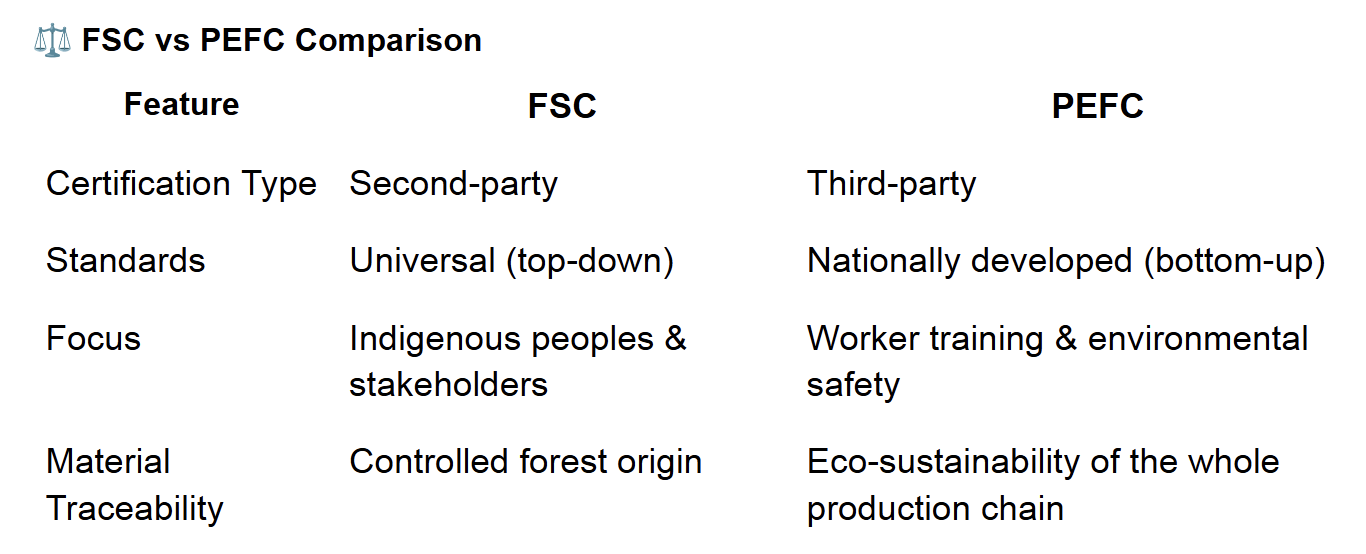
By-products like dust, shavings, and fibers are reused for….. or…….
By-products like dust, shavings, and fibers are reused for biomass fuel or engineered timber panels.
Three main sawmill products
○ Timbers: large-cut materials used in heavy structures (beams, posts).
○ Dimensional lumber: produced by longitudinal sawing.
○ Boards: <38 mm thick, ≥38 mm wide.
Drying Methods + benefits
Air drying
Kiln drying
Benefits: reduces moisture content, increases stability, strength, and decreases transport weight/cost.
Kiln drying
Peeling and Veneering
Rotary cutting
Defect removal
Air or kiln drying
Rotary cutting
log rotated while a blade slices a continuous sheet.
Defect removal
and drying (2–10% moisture) prepares veneer for gluing
Air or kiln drying
Wood-Based Products (8)
Plywood
Laminated Veneer Lumber (LVL)
Composite I-beams (LVL flanges + OSB or plywood web)
Oriented Strand Board (OSB)
Particleboard (Chipboard)
Medium-Density Fibreboard (MDF)
Natural Fiberboard (NFB)
Glue-Laminated Timber (Glulam)
Plywood
● ASTM D906: layers (plies) glued under pressure, bond as strong as the wood
itself.
● EN 313-2: grain in adjacent layers at right angles for stability.

Laminated Veneer Lumber (LVL)
● Defined by EN 14279: veneers glued with grain parallel, forming beam-like
components.
● Used in load-bearing structures or parts of I-beams.
Composite I-Beams
● Flanges: made of LVL for tensile/compressive strength.
● Web: made of structural plywood or OSB for shear resistance
Oriented Strand Board (OSB)
● ISO 17064 & EN 300: multi-layered; outer strands aligned, core
random/perpendicular.
● Identified by large, long wood strands.
Particleboard (Chipboard)
● Wood particles/flakes mixed with polymeric adhesive, pressed with heat.
● Also includes natural fibers like flax, hemp, straw.
● Used in furniture and building.
Medium-Density Fibreboard (MDF)
● Fibers from wood + resin binder + pressure and heat.
● Denser and stronger than particleboard.
● Similar uses to plywood
Natural Fiberboard (NFB)
● No synthetic glue; lignin (natural) re-polymerized via thermo-mechanical
treatment.
● Eco-friendly: respects safety/environment standards; has certifications (F****,
CE, FSC/PEFC).
Glue-Laminated Timber (Glulam)
Definition (ISO 12578)
● Multiple timber laminations bonded with grain running parallel.
● Lamination ≤50 mm thick.
Properties of Glue-Laminated Timber (Glulam)
● Superior strength-to-weight ratio (better than steel/concrete).
● Used in beams, arches, columns.
● Excellent fire resistance, dimensional stability, and formability.
Types of Glue-Laminated Timber (Glulam)
● Homogeneous Glulam: all laminations same grade/species.
● Combined Glulam: stronger laminations in tension/compression zones; rest are
lower grade.
same strength classes, but slightly lower
mechanical properties and density due to inner/outer layer combinations.
Glue-Laminated Timber (Glulam) advantages
● Renewable and recyclable.
● Low energy use in production.
● Excellent aesthetic and durability.
● Can be crafted with simple tools.
● Fire-resistant and dimensionally stable.
Advanced Wood Products
Transparent Wood
Wood-Polymer Composites (WPC)
Wood-Polymer Composites (WPC)
● Blend of natural fibers/flour (e.g., wood powder, agri-residue) + polymers
(PVC, PP, PE).
● Processing: extrusion, calendaring, injection, compression molding.
● Used in decking, cladding, fencing, furniture.
Transparent Wood
● Natural wood is opaque due to light scattering and lignin absorption.
● 80–95% of absorption due to chromophores in lignin and extractives.
● Research (Chutturi et al., 2023) explores transparent wood for potential
applications.

hardwood
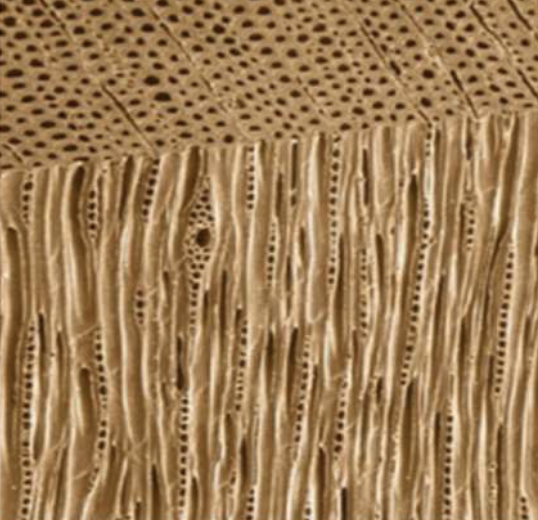
softwood
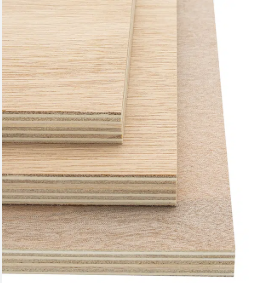
plywood
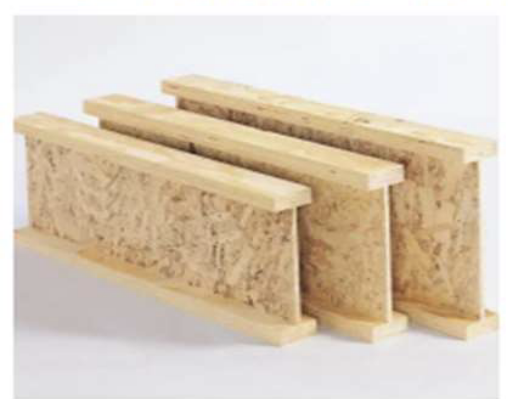
LVL composite I beam
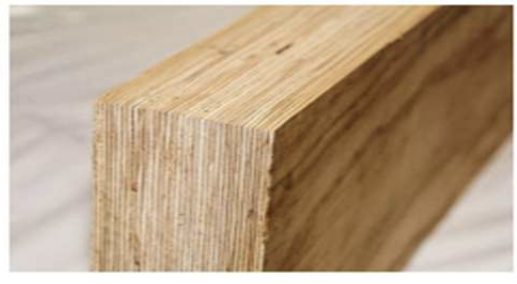
LVL

oriented strand board (OSB)

particle board
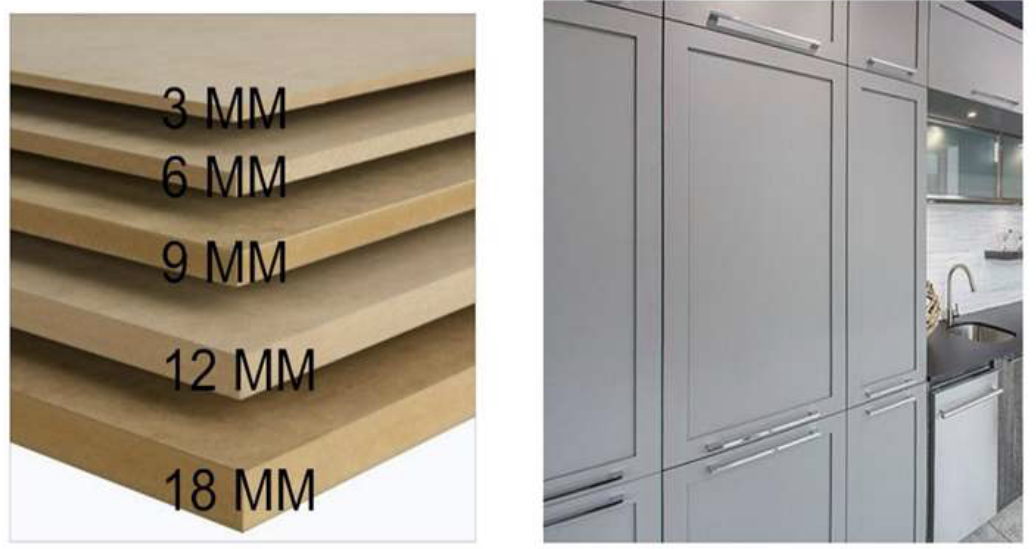
medium density fiber board

natural fiber board

glulam